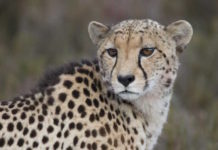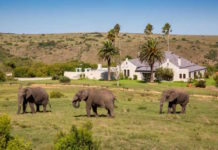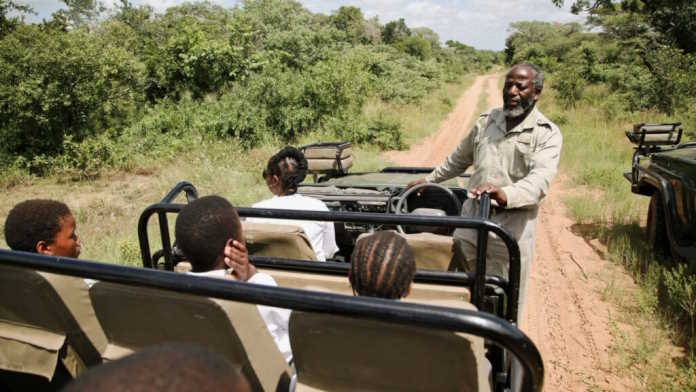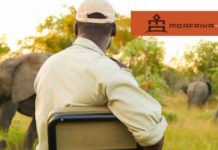In the world of African wildlife, the term “Big Five” has undergone a remarkable transformation. Once, it was synonymous with big-game hunting and adventure in the wild. Today, it stands as a symbol of hope, conservation, and the vibrant pulse of African ecosystems. But before we dive into the heartwarming side of this story, let’s look at how the “Big Five” began their journey.
The original “Big Five” were a lineup of Africa’s most challenging animals to hunt on foot. In the days of adventurous souls with a penchant for living on the edge, these beasts were the stuff of legends. The African lion, elephant, Cape buffalo, leopard, and rhinoceros reigned supreme as the top trophies for daredevil hunters. Their size, strength, and not-so-cuddly nature made them the big leagues of big-game hunting.
Fast forward to today, and you’ll find a completely different narrative. The “Big 5” now represents a remarkable force for wildlife conservation. No longer the prey of choice, these majestic creatures have become ambassadors for the wild, drawing tourists from around the world to witness their beauty in their natural habitats.
Now, let’s meet the modern-day “Big 5” and discover how they are contributing to the preservation of African ecosystems:
1. Lions and Leopards: These big cats aren’t just about their striking looks and stealthy hunting skills. They play a pivotal role in maintaining a delicate balance between prey and predators. By keeping herbivore populations in check, they ensure that ecosystems remain in equilibrium.
2. Elephants: These gentle giants are a keystone species, and their role goes far beyond their enormous size. They shape their environment by altering vegetation and creating water holes. In doing so, they create vital resources for various other species, making them true ecosystem engineers.
3. Rhinoceroses: These horned wonders aren’t just formidable defenders; they are also expert gardeners. Rhinos contribute to plant diversity by dispersing seeds as they move through their habitats. Their trampling and dung distribution play a crucial part in maintaining the health of their surroundings.
4. Buffalos: These massive creatures may not be as glamorous as the others, but they have their role to play. Buffalos are integral in nutrient cycling as their dung provides valuable resources for other organisms, nourishing the soil and supporting plant growth.
However, the significance of the “Big Five” extends beyond their ecological roles. Children in wildlife-prone areas must learn about these iconic animals. Understanding them fosters a deep appreciation for conservation efforts and a sense of connection to the natural world. Discovering the “Big 5” doesn’t just involve memorizing facts; it’s about delving into the intricate dance of life in ecosystems. It teaches children the importance of preserving these magnificent creatures and their habitats, while simultaneously promoting awareness about the potential dangers and the need for peaceful coexistence between humans and wildlife.
This is why the Africa Foundation has invested in what they call the Echo -Environmental Education programme – a thrilling initiative aimed at raising future conservationists. Through this programme, children learn about the conservation landscapes that surround them in their communities, such as the Greater Kruger and Maputaland Munywana Conservancy where Africa Foundation has a footprint through their partnership with andBeyond lodges.
The Echo programme is linked to our Future Leaders key outcome which has a focus on unlocking talent and potential whilst developing environmental awareness and understanding. Environmental Education is key to engaging communities in the issues and debates around their everyday choices and the impact that they have for the environment and conservation.
At the heart of the programme are game drives, which are an exhilarating way for children to learn about the Big 5 and other fascinating animals. These game drives take place in areas where wild animals are located, and children can experience nature up close. The Echo-Environmental Education programme also includes lessons on indigenous and alien plants, further enriching children’s understanding of the natural world.
Most often we find that the communities living closest to some of the world’s most renowned conservation areas, know the least about them and their value. Echo aims to change that by exposing community members, young and old, to the conservation land and seascapes that they are in fact, the custodians of, and working with communities to ensure that they feel the benefit of protecting the environment around them.
By supporting the programme, donors play a vital role in educating children about the importance of preserving the environment and fostering peaceful coexistence between humans and wildlife. The Echo – Environmental Education programme is a fantastic opportunity to inspire the next generation of conservationists and promote a sustainable future.
So, next time you hear about the “Big Five” remember that they are not just a relic of a bygone era of hunting; they are a symbol of hope, inspiration, and the power of conservation. The African wilderness, with its incredible inhabitants, deserves to be celebrated and protected.















